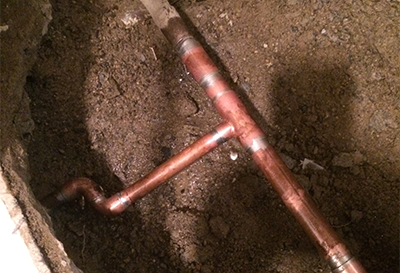Overview To Water Leakage Detection At Home
Overview To Water Leakage Detection At Home
Blog Article
Just about everyone has got his or her own thinking about Detecting hidden plumbing leaks.

Early discovery of leaking water lines can reduce a potential disaster. Some little water leakages may not be visible.
1. Check Out the Water Meter
Every house has a water meter. Examining it is a guaranteed way that aids you find leaks. For beginners, shut off all the water sources. Make sure no one will certainly flush, make use of the faucet, shower, run the cleaning equipment or dishwashing machine. From there, most likely to the meter and watch if it will alter. Given that no one is using it, there must be no activities. If it relocates, that indicates a fast-moving leakage. Likewise, if you spot no changes, wait a hr or 2 and also check back once again. This means you might have a sluggish leak that could even be below ground.
2. Examine Water Usage
If you find unexpected adjustments, regardless of your consumption being the exact same, it indicates that you have leakages in your plumbing system. A sudden spike in your bill suggests a fast-moving leakage.
At the same time, a steady increase on a monthly basis, despite having the very same behaviors, reveals you have a slow leak that's also slowly escalating. Call a plumber to extensively examine your residential property, particularly if you feel a warm location on your floor with piping underneath.
3. Do a Food Coloring Examination
When it comes to water consumption, 30% comes from bathrooms. If the shade in some way infiltrates your bowl during that time without flushing, there's a leakage in between the tank as well as dish.
4. Asses Exterior Lines
Don't neglect to inspect your outdoor water lines too. Test spigots by connecting a yard hose. Ought to water permeate out of the link, you have a loosened rubber gasket. Change this and also ensure all connections are tight. If you've got a sprinkler system, it will certainly help get it expertly analyzed and also kept each year. One small leak can throw away lots of water as well as surge your water bill.
5. Examine the situation and check
Property owners must make it a habit to inspect under the sink counters and also also inside cabinets for any kind of bad odor or mold growth. These two warnings show a leakage so punctual attention is required. Doing routine assessments, also bi-annually, can conserve you from a significant trouble.
Inspect for stainings and compromising as the majority of devices as well as pipelines have a life expectancy. If you presume dripping water lines in your plumbing system, do not wait for it to intensify.
Early discovery of dripping water lines can mitigate a potential catastrophe. Some small water leakages might not be noticeable. Inspecting it is a guaranteed method that aids you find leaks. One small leak can lose tons of water and surge your water bill.
If you suspect leaking water lines in your plumbing system, don't wait for it to escalate.
WARNING SIGNS OF WATER LEAKAGE BEHIND THE WALL
PERSISTENT MUSTY ODORS
As water slowly drips from a leaky pipe inside the wall, flooring and sheetrock stay damp and develop an odor similar to wet cardboard. It generates a musty smell that can help you find hidden leaks.
MOLD IN UNUSUAL AREAS
Mold usually grows in wet areas like kitchens, baths and laundry rooms. If you spot the stuff on walls or baseboards in other rooms of the house, it’s a good indicator of undetected water leaks.
STAINS THAT GROW
When mold thrives around a leaky pipe, it sometimes takes hold on the inside surface of the affected wall. A growing stain on otherwise clean sheetrock is often your sign of a hidden plumbing problem.
PEELING OR BUBBLING WALLPAPER / PAINT
This clue is easy to miss in rooms that don’t get much use. When you see wallpaper separating along seams or paint bubbling or flaking off the wall, blame sheetrock that stays wet because of an undetected leak.
BUCKLED CEILINGS AND STAINED FLOORS
If ceilings or floors in bathrooms, kitchens or laundry areas develop structural problems, don’t rule out constant damp inside the walls. Wet sheetrock can affect adjacent framing, flooring and ceilings.
https://www.servicemasterbyzaba.com/blog/how-to-detect-water-leakage-in-walls/

Hopefully you liked our post on Locating water leaks. Thanks so much for spending some time to read through our article. For those who liked our blog entry please do not forget to share it. I praise you for your time. Kindly pay a visit to our website back soon.
Report this page